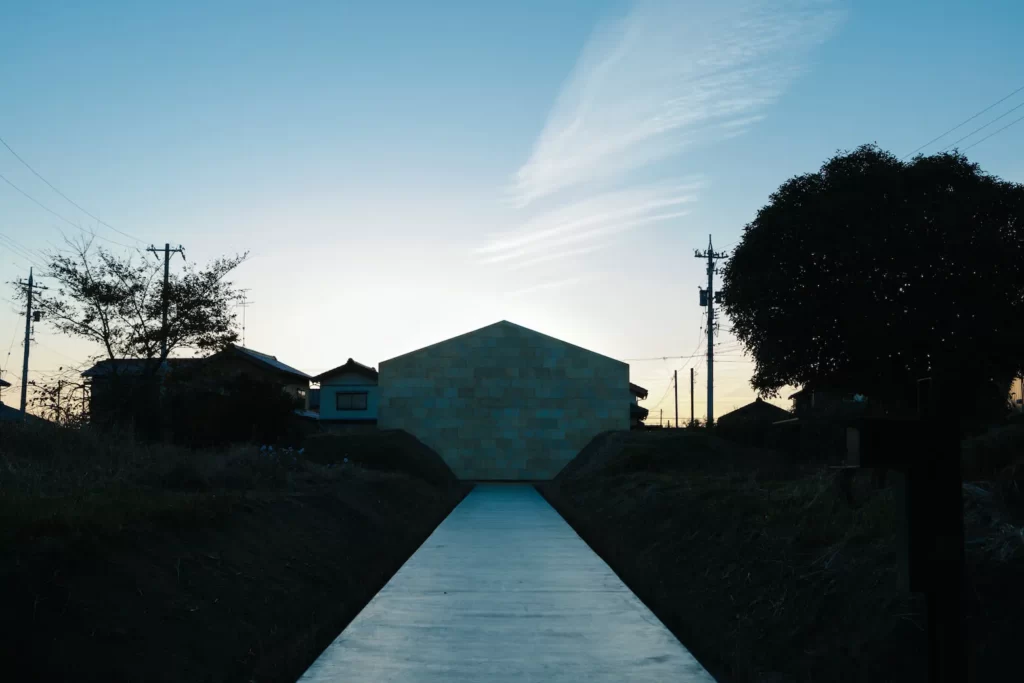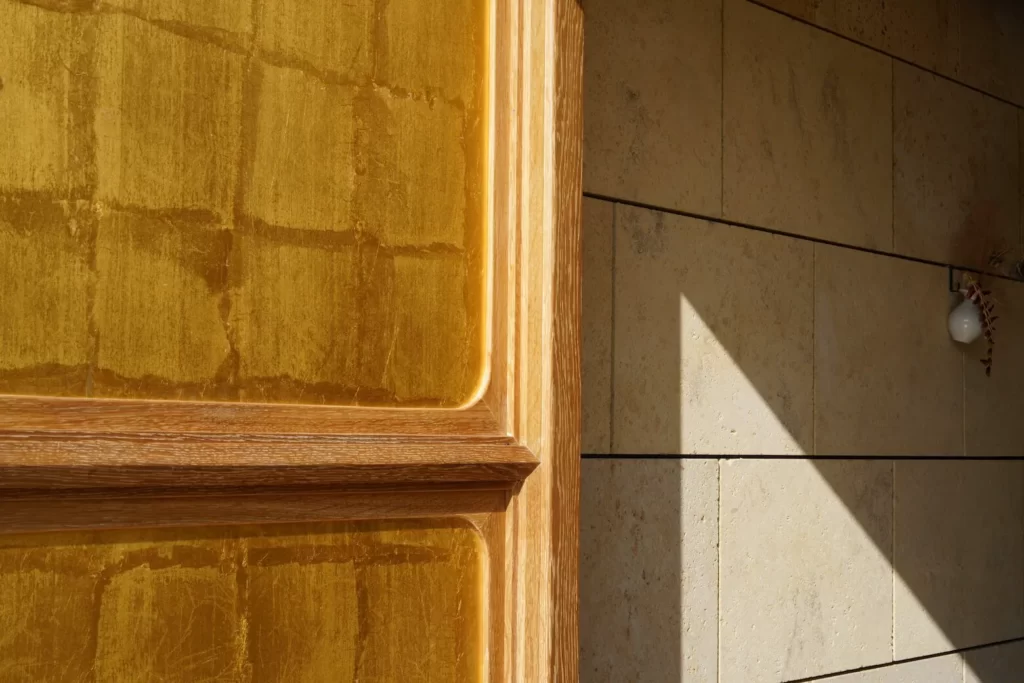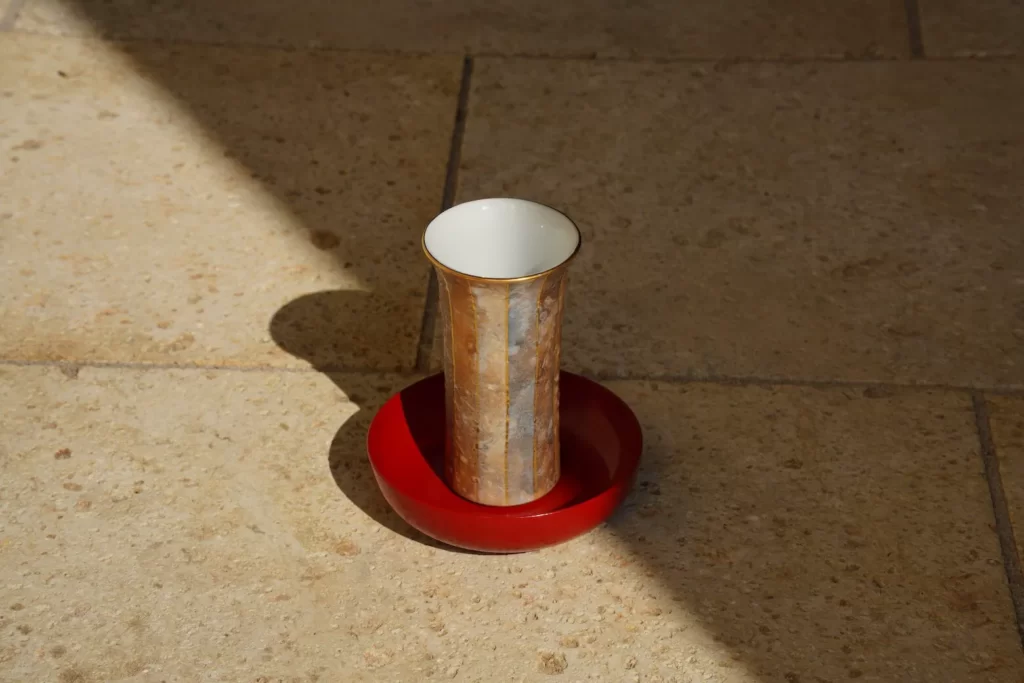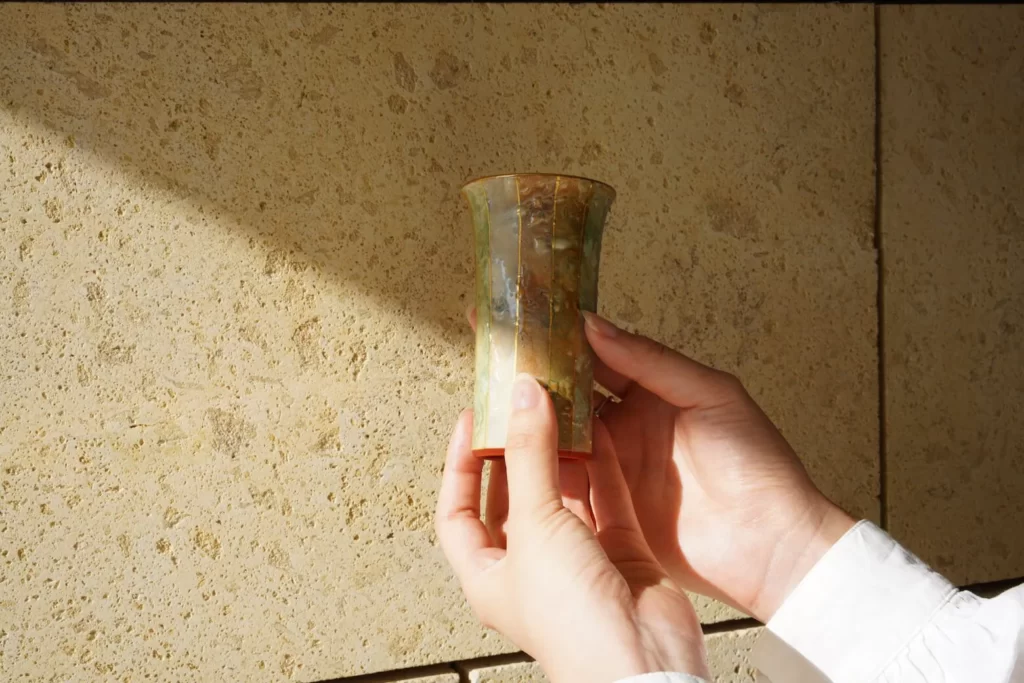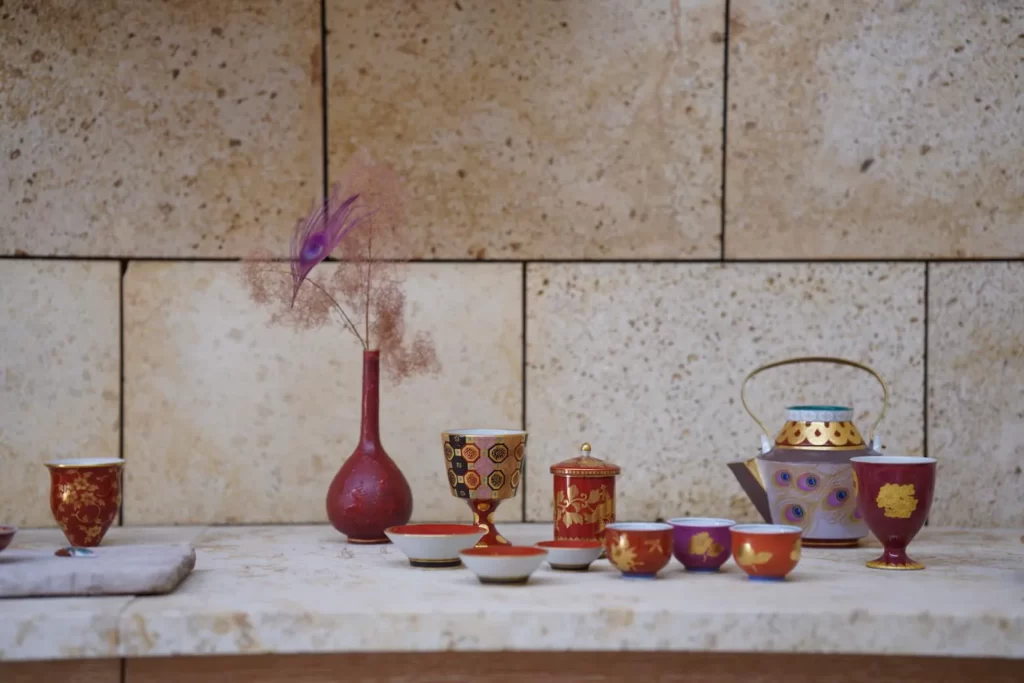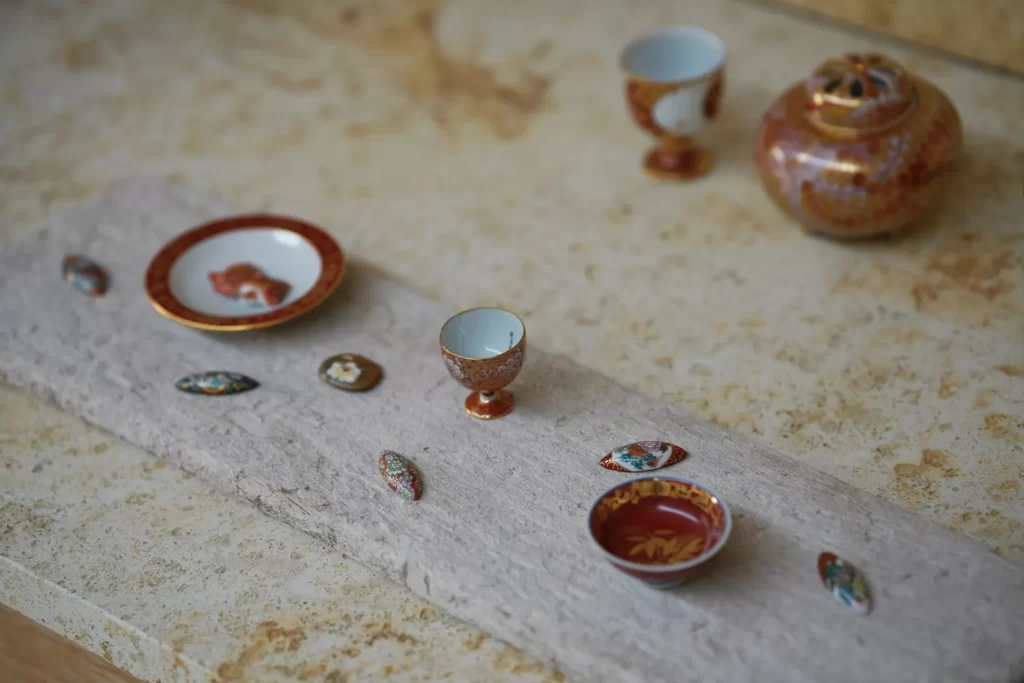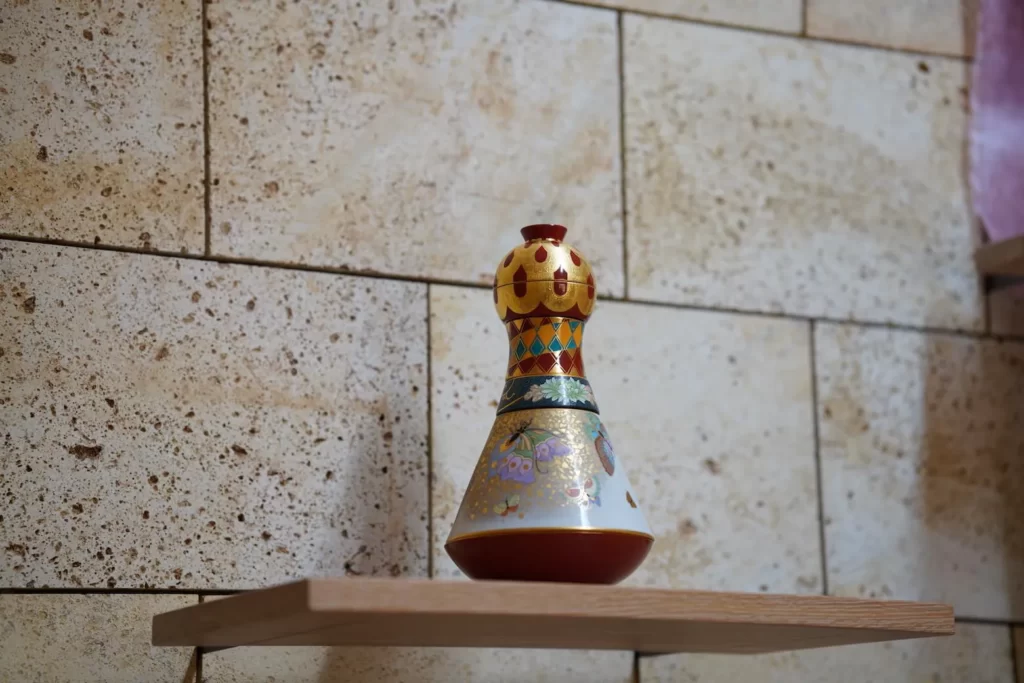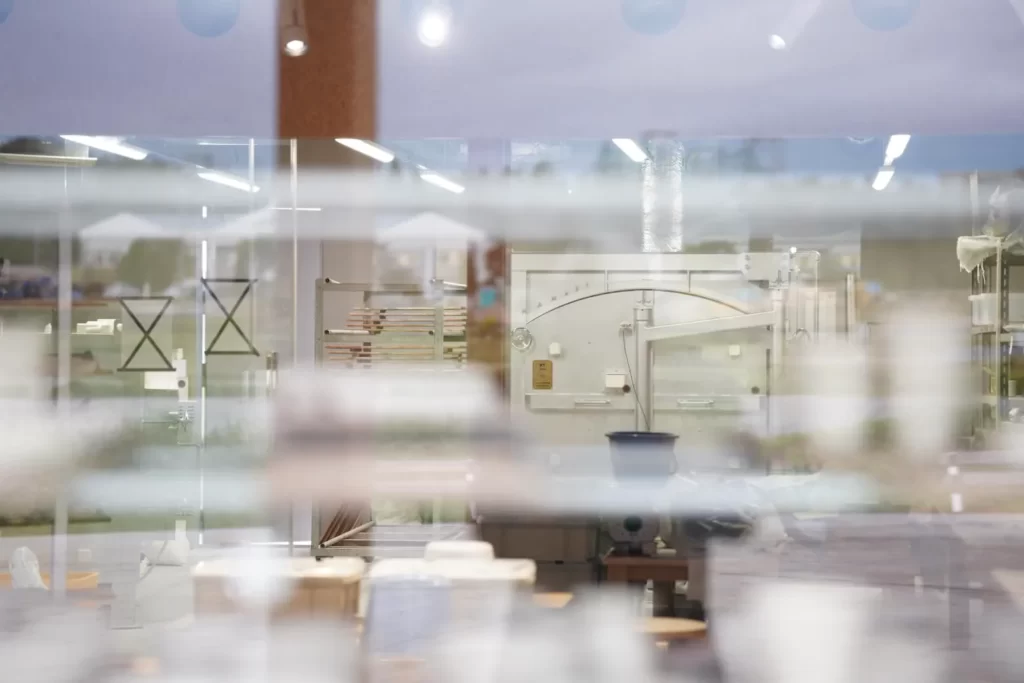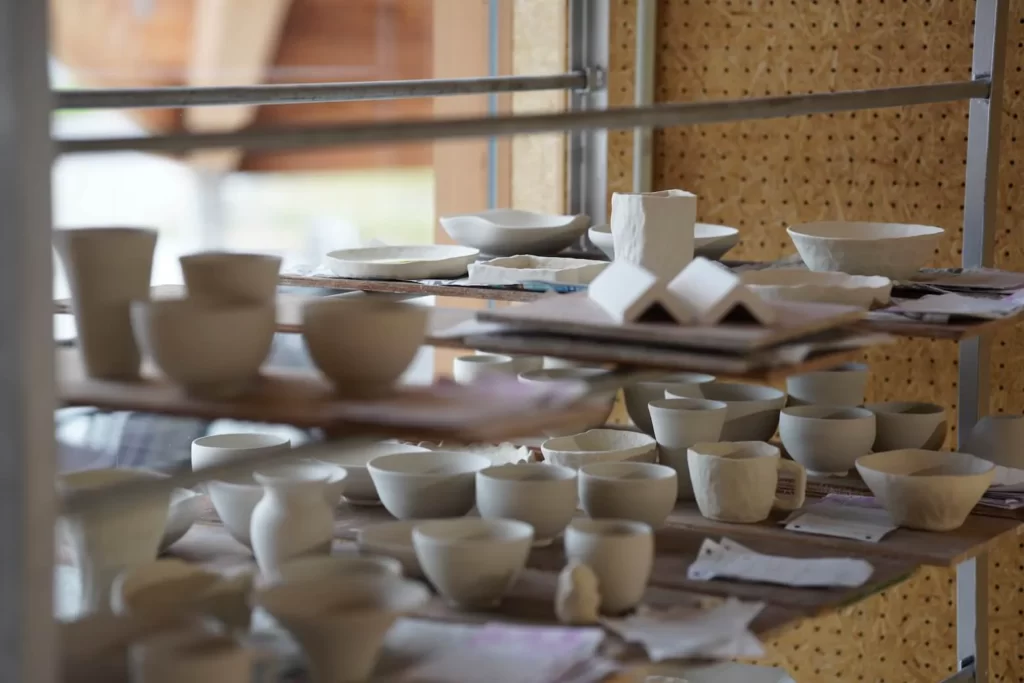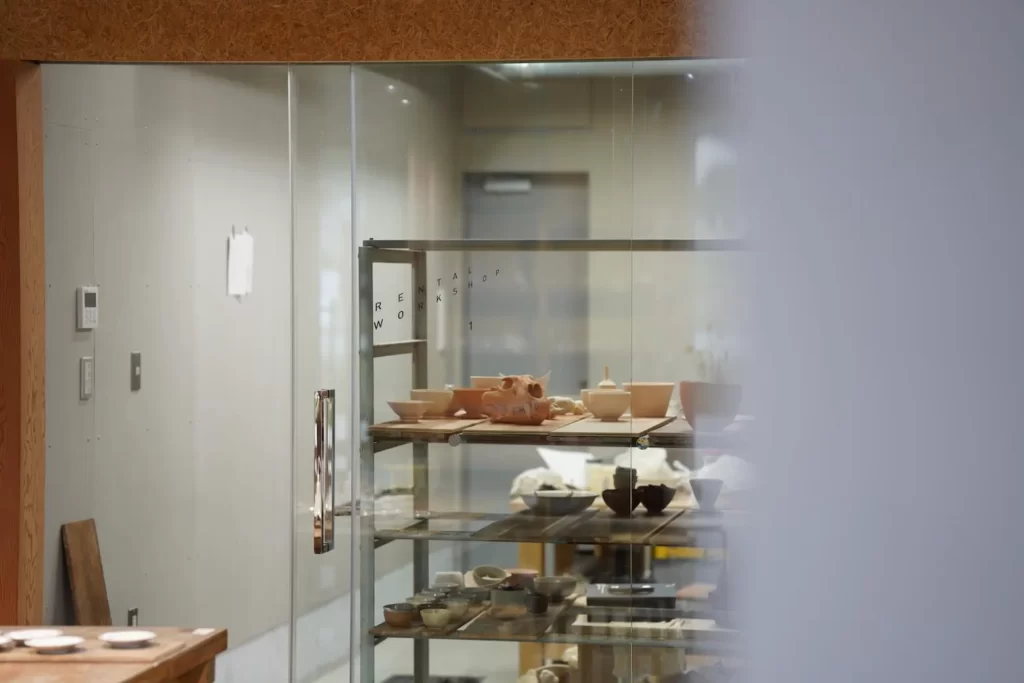Is the Japanese Kutani-ware Just an Ancient Tradition?
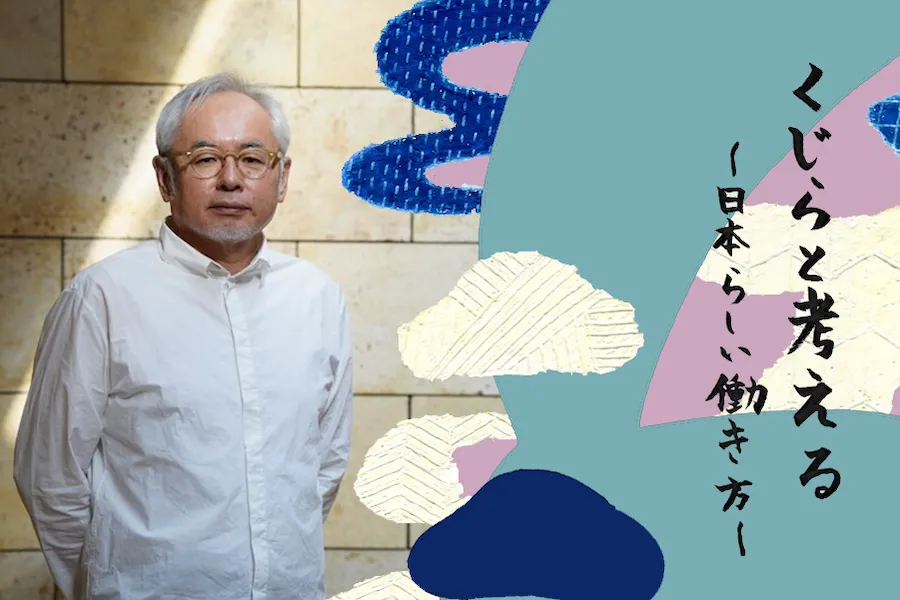
In Japan, where centuries-old customs and cutting-edge innovation harmoniously coexist, there exists a treasure of artistry that continues to captivate hearts around the world. This nation steeped in tradition yet relentlessly forward-looking, has birthed an art form known by the name of Kutani-ware; an art that beautifully blends the old & the new.
In this article, fourth-generation potter and ceramic artist at Kinzan Kiln, Mr. Yukio Yoshita describes how the core-essence of Kutani-ware can teach us how tradition thrives in a rapidly changing world, while also offering insights into the Japanese way of working. But first, let us start with the basics.
What is Kutani-Ware?
Kutani ware is a type of Japanese porcelain pottery that originated over 350 years ago in the Kaga region of Ishikawa Prefecture. The name “Old Kutani” refers to porcelain decorated with overglaze enamels. The Maeda family established a kiln in the Kaga mountain village of Kutani by 1656.
Defined by its vibrant colors, intricate designs, and unparalleled craftsmanship, Kutani-ware is which is a great example of the partnership of tradition and innovation.
The Legacy of Kinzan Kiln
Kinzan Kiln, situated in Komatsu City, Ishikawa Prefecture, has been a protective fort of Kutani-ware production for over a century. Established in 1906 by the visionary Yoshita Shosaku, Kinzan Kiln has consistently produced exquisite pottery, with a specialization in gold glazing—an art form that has made Kutani-ware renowned worldwide. This art is characterized by its vivid use of colors, known as “Kutani Gosai,” the gold-glazed “Kinrande,” and “Hakumori,” which employs white paint to create intricate patterns.
Having dedicated decades of his life to the art of Kutani-ware, Yukio Yoshita’s contribution to Kinzan Kiln is paramount. He introduced an original technique for gold-painted porcelain, infusing his creations with pale colors reminiscent of impressionist paintings. These works exhibit unique, uneven surfaces that are unusual for porcelain, making them soft and comfortable to hold in one’s hand. Describing this he says, “Kaolin is lightly pounded at the stage of preparing the base materials, and after firing without glazing, a water-repellent agent is applied in a mottled pattern, after which it is glost fired. Doing this gives the surface an expression similar to that of earthenware (pottery).”
Kutani-ware, known as “Japan Kutani” during the Meiji period, has been widely praised overseas as well. Beyond the boundaries of Japan, Kinzan Kiln’s creations are being exhibited globally, from New York to London, Paris to Taiwan. Yoshita’s masterpieces have found homes in prestigious institutions such as the Victoria and Albert Museum in England and the Indianapolis Museum of Art in the United States.
Difference between Craftsman and Artist
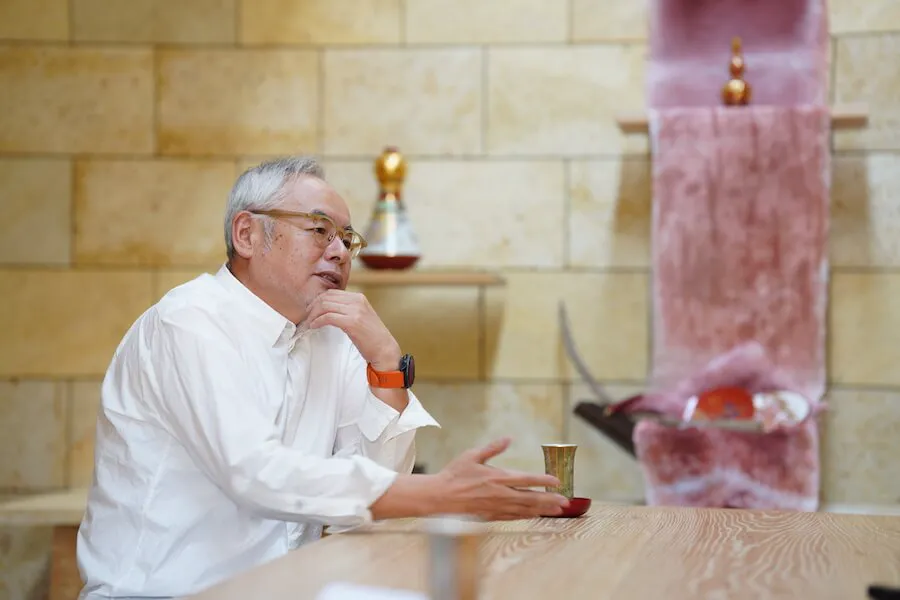
Yoshita’s journey as a potter is a testament to the evolving landscape of Kutani-ware and traditional craftsmanship. He was initially hesitant to take over the family business but he felt compelled to make a change.
Although he felt that something wasn’t right with the “apprenticeship system,” which employed many craftsmen and involved an absolute relationship between master and apprentice, he gradually came to face the idea of “taking over the Kiln”.
In 2007, Yoshita became the 4th generation to take over the Kiln, and he took that as an opportunity to gradually change the way he approached working. Eventually, he transitioned the Kiln from the Japanese traditional top-down approach to a more collaborative, teamwork-oriented one.
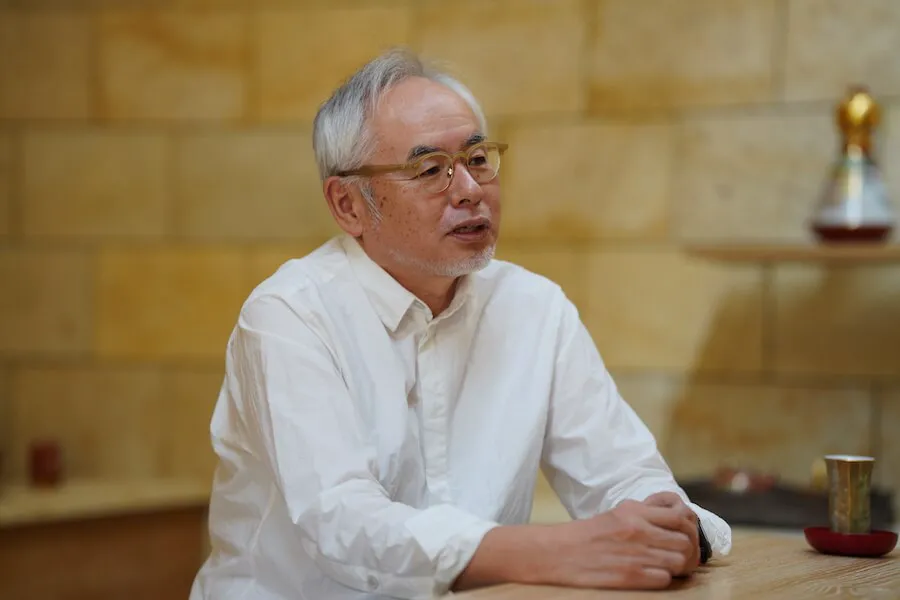
Yoshida Yukio, 4th generation ceramic artist, Nishikiyama Kiln
Born in Komatsu City, Ishikawa Prefecture in 1960, Yoshida graduated from Kanazawa College of Art in 1982 and entered the Ishikawa Kutani-Yaki Technical Training Institute. 1985 Awarded the Encouragement Prize at the Asahi Ceramic Art Exhibition. 1986 Graduated from the Ishikawa Kutani-Yaki Technical Training Institute. 1988 Joined Kinzangama Kiln. 1992 Grand Prize at the Traditional Kutani-Yaki Craft Exhibition. 2007 became the fourth generation of Kinzangama Kiln. He was awarded the Grand Prize of the Traditional Kutaniyaki Craft Exhibition in 2009, and the Prince Takamatsu Memorial Prize at the Japan Traditional Crafts Exhibition in 2010.
Describing this transformation, he recalls that earlier his father, as the head of the family, was in charge of the direction of the kiln. He gave detailed instructions to the craftsmen after getting a grasp on everything himself. However, after Yoshita took over, he reframed his colleagues not as mere craftsmen but as valued staff members, sharing all kinds of information with them so that they could work independently.
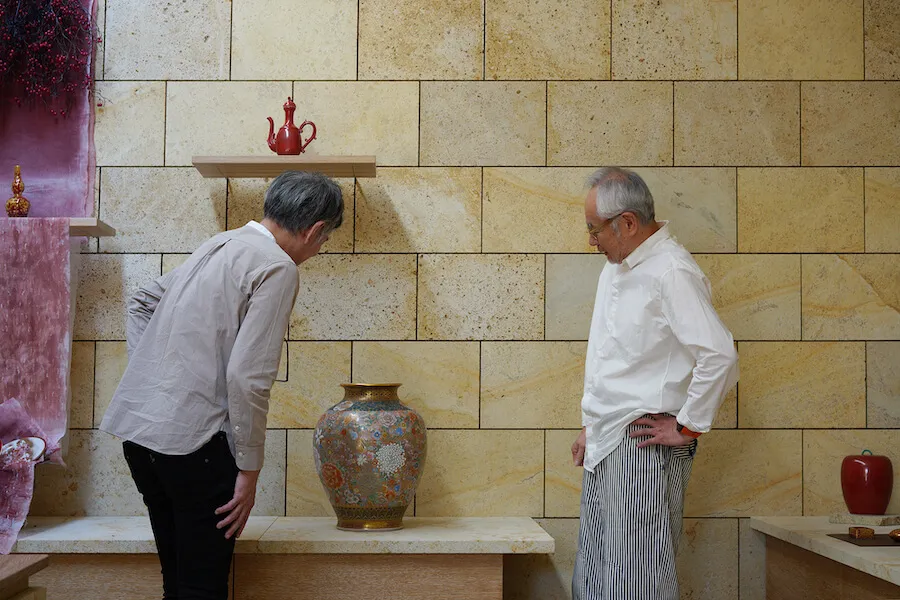
In this new paradigm, meetings became a cornerstone of their operations, fostering open communication and enabling the team to work independently. Yoshita explains, “We are not just making products ordered by distributors as was done in the past, but we ourselves plan exhibitions and events, create concepts, and make the works.”
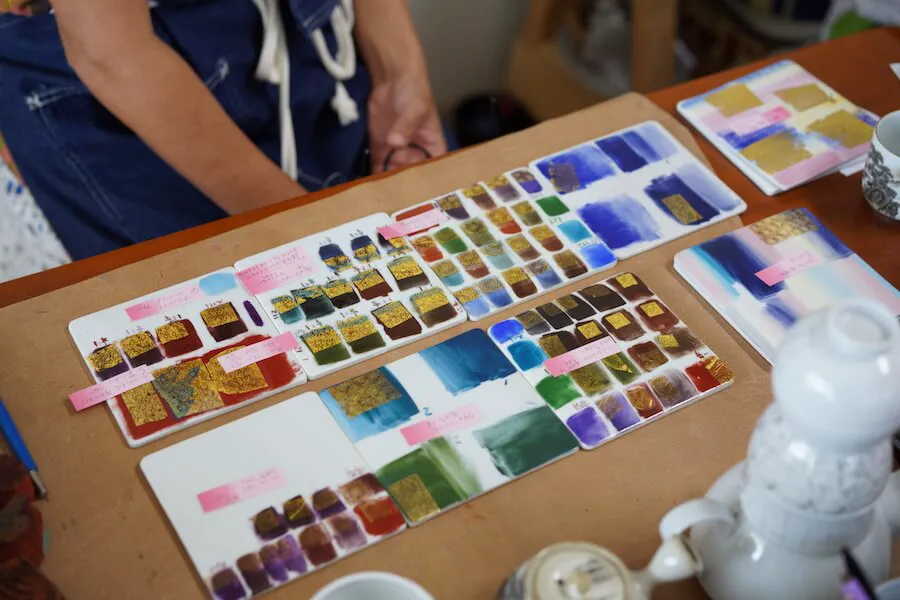
Unlike in the past, the staff at Kinzan Kiln today works on the premise that someday they will be working as independent artists, which is why they must learn not only the techniques but also management. So if you ever wonder what is the real difference between a craftsman and an artist, it is this shift from ‘doing what you’re told’ to ‘working independently’ which marks the difference between being a craftsman and an artist.
Diverse Expressions of Kutani-ware
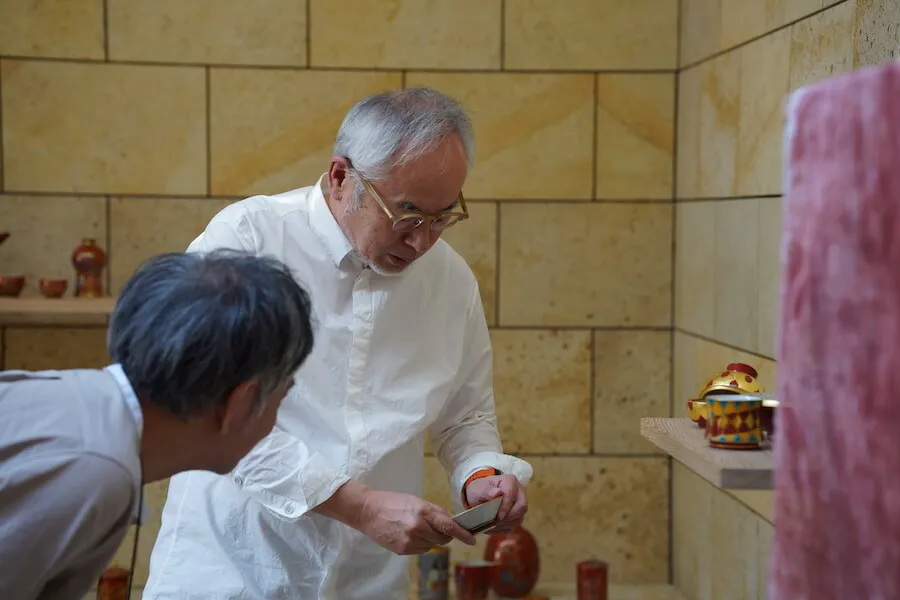
Coming back to Kutani-ware, one of its unique qualities is its diversity of designs, defying a singular characterization. Kinzan Kiln exemplifies this diversity, with each member of the Yoshita family — Yukio, Minori (his father), and Rumiko (his wife)—bringing their distinct styles to their creations. So, while some pieces exhibit light gradations, others burst with vivid colors and strong contrasts. This diversity increases as you shift your attention to the works of other kilns.
However, according to Yoshita, definitively describing the characteristic of Kutani-ware as “diversity” would be an inadequate description of its essence. “I am often asked, ‘What is Kutani-ware?’ and it is difficult to answer. Many people imagine something vivid like Kutani Gosai, but there are also pieces that are only white porcelain or blue and white porcelain (just indigo on white). Throughout its history, it has absorbed various cultures and created new ones while responding to changes in society. As a result, the designs that have been passed down are diverse. That is without question.”
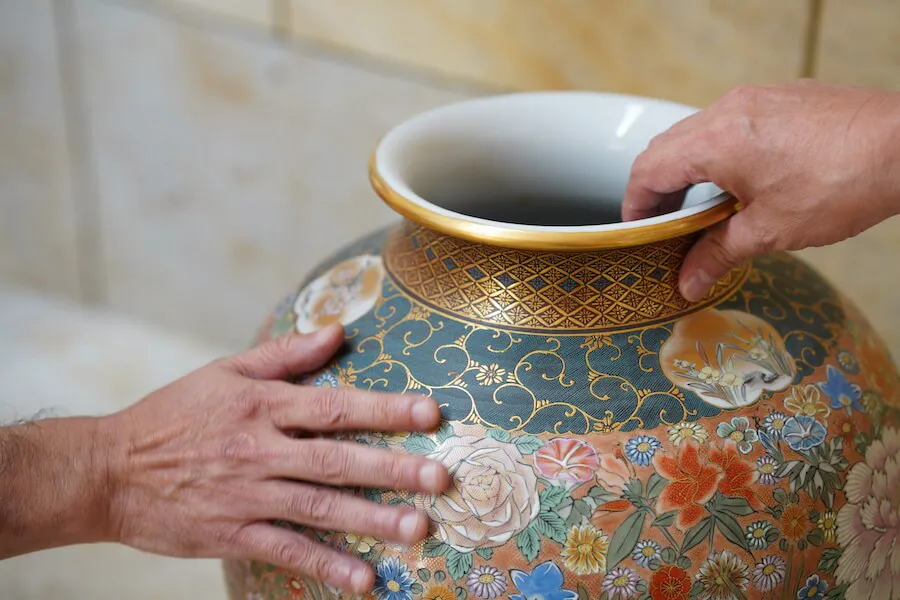
What distinguishes Kutani-ware, Yoshita points out, is its propensity to “just do it.” He attributes this approach to a historical legacy where craftsmen balanced their work between farming and pottery-making. This dedication to their craft led to intricate and meticulous designs, an embodiment of the Japanese concept of “Yohaku no bi” (the beauty of blank spaces).
Despite advances in technology, Kutani-ware retains its charm with some significant improvements. Instead of wood-fired kilns, where the temperature is adjusted by experience and intuition, electric kilns where suitable temperature settings are controlled by a computer, have been introduced, eliminating the need to keep a close eye on the fire. Gold leaf is now manufactured using a laser cutter instead of scissors, allowing for more elaborate forms to be expressed.
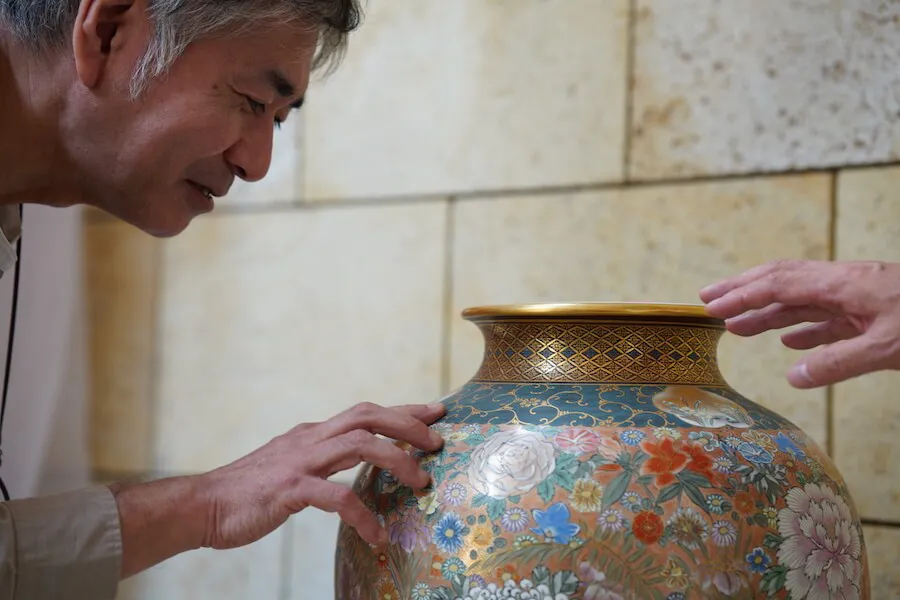
These new technological changes have revolutionized the production process, expanding the range of artistic expression, while also highlighting the fact that innovations are key to keeping traditions alive.
Emphasizing on this, Yoshita says, “Whilst encountering various kinds of people, old & new techniques, and things, I think about what I can do based on the techniques I have cultivated so far. I interpret the techniques and expressions that have been handed down until now and further express them in new works of art. I think this is what I can do as an artist.”
Conveying Values and Creating Connections
As long as craftsmen continue to quietly hone their skills and techniques, and make good products, the quality of their work will come across naturally. However, according to Yoshita, in today’s information-saturated world, creators must go beyond producing quality products. They must communicate the essence and background of their work, bridging the gap between the creator and the consumer.
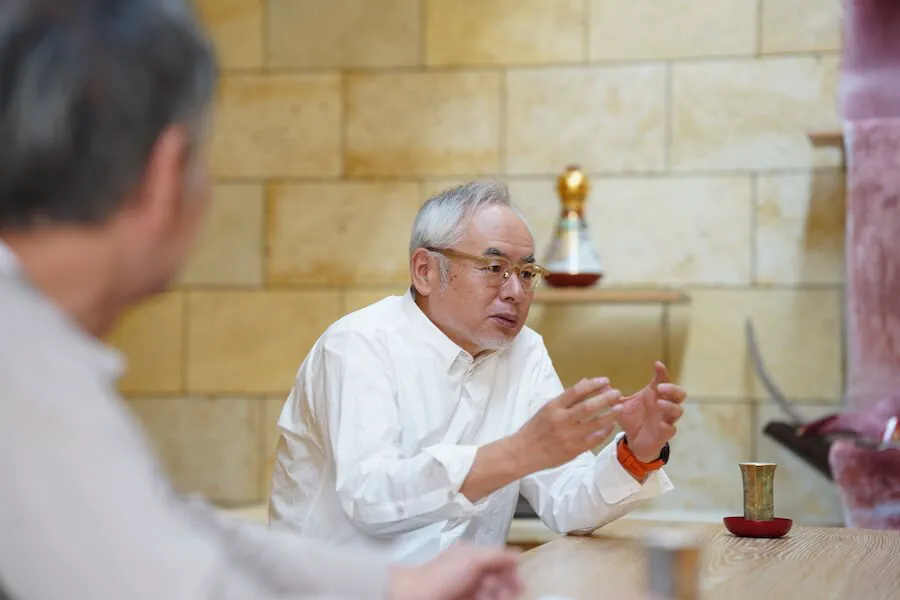
Yoshita emphasizes the importance of conveying the value of Kutani-ware and its unique charm, encouraging users to embrace imperfections as part of the story. Through initiatives like dinner parties and workshops, Kinzan Kiln invites visitors to understand the joy of using quality items over time and forming connections with the art and the artists.
In such workshops, artists talk directly with customers, explaining the background of their work and their techniques. Rather than their work being “decorated in a flashy way”, they tell them how to “make use” of it in their daily lives. By doing so, they hope that visitors would gain a deeper understanding of the intrinsic value of their work, and the richness of continuing to use quality things for a long time.
These workshops also act as a medium to teach the customers about the beauty of the creation of Kutani-ware. For instance, the cracking or fading of any item is not a loss in the eyes of the artist who has created it. Instead, for them, the gold peeling off or the color fading is a ‘unique charm’, and any cracks on the item is an opportunity to repair it by Kintsugi (mending breakages with gold-mixed lacquer). They believe that it adds depth and meaning to the items, truly making them one’s own.
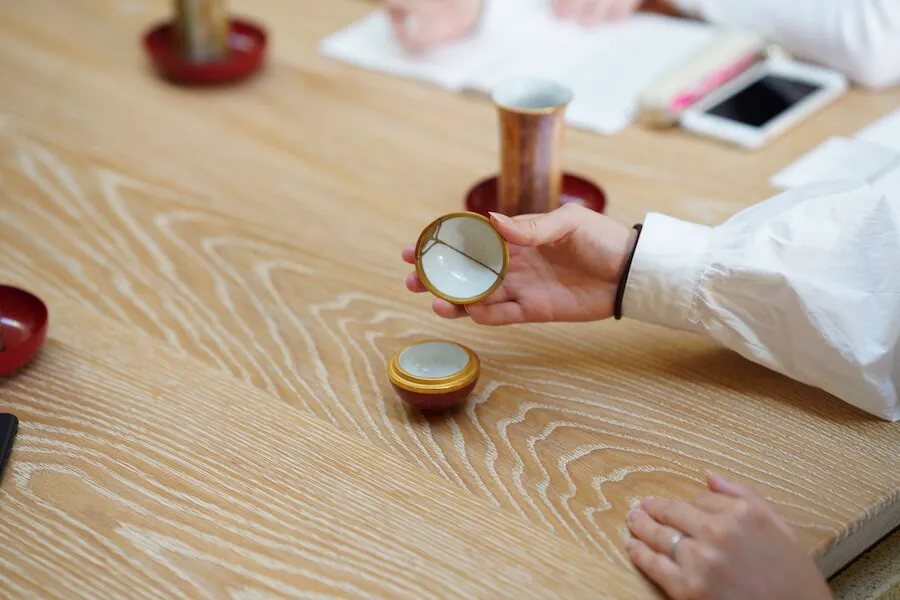
Working Hand in Hand for the Future
Yoshita’s commitment to preserving Kutani-ware extends beyond his own kiln. As the president of the Komatsu Kutani Processing Cooperative Association, he acknowledges the challenges facing the industry, including a declining number of potters and businesses. He calls for measures to promote employment and train successors to ensure the craft’s sustainability.
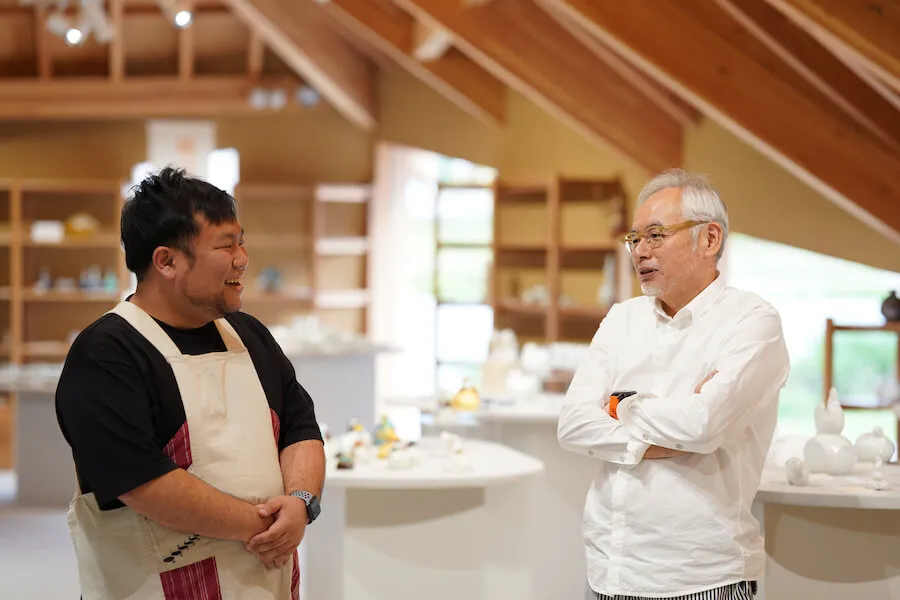
The “CELABO KUTANI” complex, which opened in 2019, serves as a hub for promoting Kutani-ware. It offers a unique opportunity for visitors to engage with the art, learn from artists, and even try their hand at pottery. They promote the idea that collaboration among different stakeholders of the art is key to sustaining the Japanese tradition.
Conclusion: Preserving Traditions with “Ingenuity”
Kutani-ware is one of the many beautiful examples of the rich Japanese heritage and traditions. Since the Muromachi period, this diverse pottery that has never fitted into a single mold has continued to be a major brand in the country.
And the reason is that no matter the generation, there have always been potters who have had “ingenuity” and a spirit of independence and self-reliance. The art of Kutani-ware is a testament to the power of transformation, the embrace of diversity, and the importance of conveying values to create lasting connections.
The journey of renowned Kutani-ware artist Yukio Yoshita’s journey from reluctance to embrace Japanese tradition, and from his passionate commitment to innovation encapsulates the essence of this timeless art. In fact, Yoshita’s approach to preserving Japanese tradition through innovation and communication serves as a beacon of hope for the continued vitality of Kutani-ware. It reminds us that tradition, when infused with ingenuity, can thrive and evolve for generations to come.
The art of Kutani-ware is not just about making beautiful ceramics; it’s about preserving a cultural legacy and passing it on to the next generation, ensuring that the Japanese way of working continues to inspire and endure.
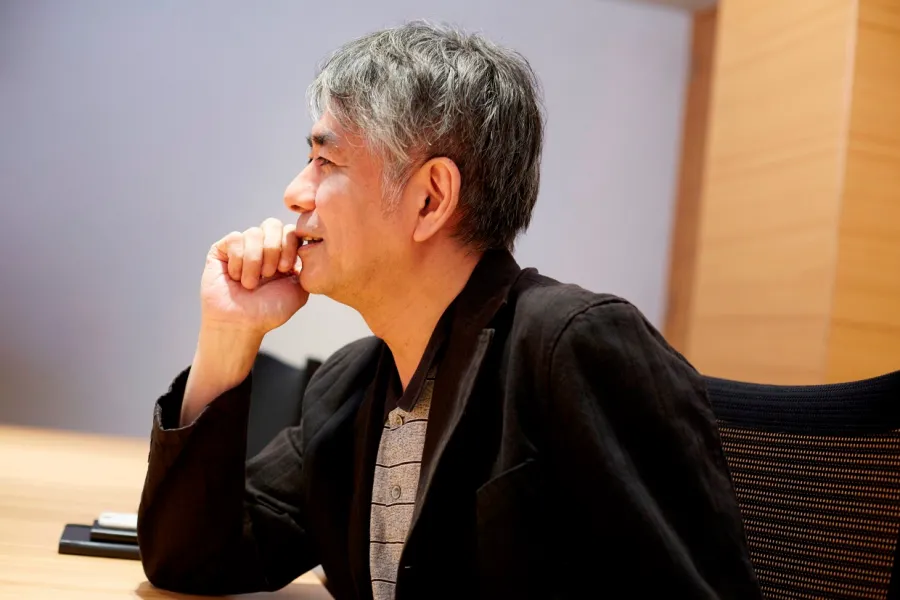
Yasushi Kujirai
Mr. Kujirai is engaged in researching how the working environment should be in order to make everyone involved in the office happy, and developing methodologies and tools to construct such a working environment. For more than 30 years, he has been actively seeking to acquire a wide range of knowledge in order to deal with the extremely interdisciplinary subject of the office. His major publications include “Office Jiten (Office Dictionary),” “Office Environment Planning Handbook,” “Management Innovation and Office Environment,” “Office Evolution,” and “Future Prospects for ‘Hataraku'” (The Future of ‘Work’).
Updated September 10, 2020
Production Cooperation: Sachiyo Oya
Photo: totem
Illustrations: Uni no Reona
Photo supply: Kinzan Kiln




